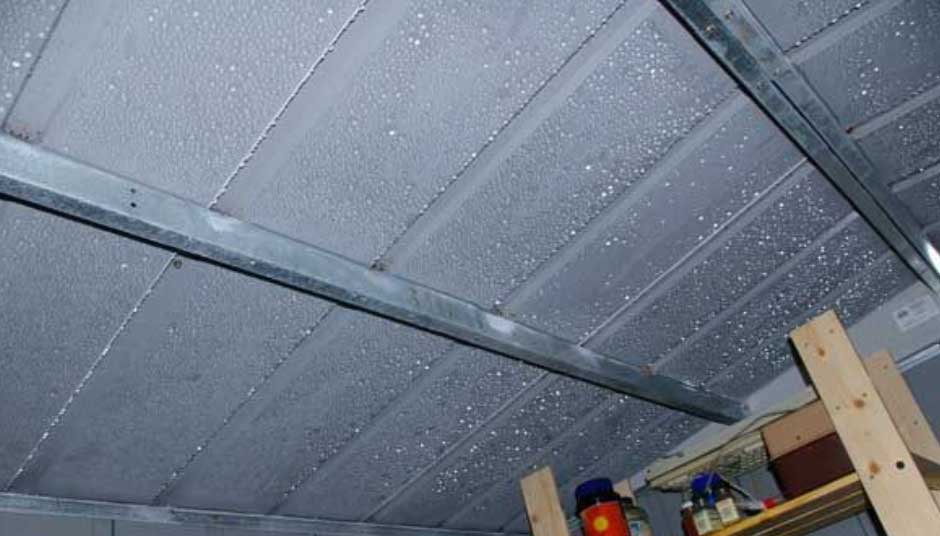Skip to the good bit
ToggleCondensation in metal sheds can be a pesky problem, often leaving you with damp tools and soggy storage. As someone who values keeping things dry and organized, I’ve discovered that tackling this issue is all about understanding the science behind it. When warm, moist air inside the shed meets the cooler metal surfaces, it condenses into water droplets, turning your shed into a mini rainforest.
To minimize condensation, it’s crucial to address both insulation and ventilation. Insulation can help reduce the temperature difference between the air inside and the metal surfaces, while proper ventilation ensures that moisture doesn’t build up in the first place. By taking these steps, you can create a more stable environment inside your shed, keeping your belongings safe from the damaging effects of moisture. Let’s dive into some practical solutions to help you bid farewell to condensation woes once and for all.
Understanding Condensation in Metal Sheds
Condensation in metal sheds occurs when warm, moist air meets the cooler surfaces of the shed, such as roofs or walls. This interaction leads to the formation of water droplets, primarily on the ceiling, due to rising warm air. Metal’s excellent conductivity contributes to rapid cooling, quickly reaching the dew point and causing this condensation.
Rusty tools and damaged items can result from this damp atmosphere inside the shed. Metals, being good heat conductors, are naturally prone to this phenomenon, especially when there’s a lack of insulation. Metal building insulation can help by reducing the temperature disparity between the inside air and metal surfaces. Insulation materials, such as foam board or reflective barriers, help to maintain consistent temperatures, mitigating the risk of moisture buildup.
Ventilation is another key factor. Proper airflow prevents moisture accumulation by allowing trapped warm air to escape before it cools and condenses. Installing vents or fans strategically can make a significant difference in minimizing condensation-related damage.
For those dealing with foundation dampness, ensure that a damp proof course is installed during shed construction. This step prevents moisture from rising through the base and reaching the metal panels. With these measures in place, metal sheds can stay dry and functional, protecting the items within from the negative effects of condensation.
Causes of Condensation
Condensation in metal sheds mostly occurs when moist air meets cooler surfaces, resulting in water droplets. Understanding the moisture sources helps manage condensation effectively.
Interior Moisture Sources
High humidity levels inside metal sheds can lead to condensation. Common sources include heating systems, human respiration, and activities like cooking or cleaning. For instance, improper use of heating systems such as oil or gas-fired heaters can release moisture into the air. Additionally, livestock in agricultural buildings contribute to moisture through respiration and perspiration. This moisture accumulates, especially when inadequate ventilation limits air exchange. Running a fan, using an AC compressor, or installing vents and louvers can assist in circulating air and reducing interior humidity.
Exterior Moisture Sources
External factors also play a significant role in condensation. Moist air from the outside infiltrates through gaps or improperly sealed areas of the shed. Rainwater or melted snow can seep through unsealed roofs or walls. Poorly selected or improperly installed vapor retarders allow moisture intrusion. In climates where temperatures frequently dip below 35 degrees Fahrenheit, cold surfaces reach dew point more rapidly, increasing condensation risks. Ensuring effective metal building insulation and proper sealing of potential leakage points helps mitigate these issues by keeping external moisture at bay.
Effective Strategies to Minimize Condensation
Condensation in metal sheds can lead to rust and damage. Implementing effective strategies minimizes these risks and extends the shed’s life.
Proper Insulation Techniques
Insulation plays a key role in preventing condensation. I recommend using metal building insulation like foam boards or fiberglass blankets. These materials mitigate temperature differences between the metal surfaces and the interior air, keeping the shed’s temperature consistent. It’s crucial to cover walls, ceilings, and floors thoroughly and seal any gaps at joints to eliminate air leaks. This approach creates a barrier that prevents warm moist air from directly contacting cooler metal, thus minimizing condensation.
Installation of Vapor Barriers
Vapor barriers are essential for blocking moisture infiltration. They prevent exterior dampness from entering the shed and condensing on surfaces. Choose polypropylene or similar continuous coverings to seal the shed’s envelope effectively. By covering the entire interior, you hinder moisture from penetrating and condensing on the metal. Make sure to properly seal windows, doors, and any side laps to maintain an airtight environment, further preventing moisture buildup.
Ventilation Solutions
Ventilation ensures air circulation and aids moisture control within the shed. Installing vents on opposite walls allows cross-ventilation, maintaining air flow and reducing humidity. I recommend using end wall louvers or ridge vents for optimal results. If possible, add fans or open windows to enhance air exchange, limiting the time moist air lingers and potentially forms condensation. By maintaining a well-ventilated environment, the likelihood of condensation significantly decreases.
Construction Considerations
Minimizing condensation in metal sheds starts with its construction. Making informed decisions during this stage impacts the shed’s long-term resistance to moisture problems.
Choosing the Right Foundation
A solid foundation is crucial for a metal shed to effectively manage condensation. I recommend choosing a raised concrete slab with a damp proof membrane to block moisture rising from the ground. If concrete isn’t an option, consider a well-constructed wooden platform elevated above the ground to allow airflow beneath. This helps in reducing the temperature difference between the shed floor and surrounding environment, which decreases condensation risks. Ensure the foundation is level, as an uneven base can lead to water pooling, increasing interior moisture.
Sealing and Leak Prevention
Proper sealing significantly prevents water infiltration and subsequent condensation in metal sheds. Use weatherstripping to seal door frames and window edges, preventing moist air entry. For larger gaps or cracks, apply foam sealant. Check the metal panels for any signs of deterioration that might allow leaks. Regularly maintaining these seals ensures they remain effective against the elements. By focusing on sealing and leak prevention during construction, I minimize the risks of unwanted moisture buildup inside the shed.
Maintenance Tips for Reducing Condensation
Condensation in metal sheds can lead to damp conditions and damage to stored items. Implementing effective maintenance practices helps reduce the risk of condensation formation.
Regular Air Circulation Practices
Maintaining regular air circulation is crucial in preventing condensation buildup. I ensure vents are open and unobstructed, which promotes airflow and disperses moisture-filled air. Installing vents on opposite sides of the shed boosts cross-ventilation. Opening windows during warm weather further aids in air exchange. Using fans for enhanced airflow diminishes the temperature difference between the interior and cold metal surfaces. These simple yet effective practices can significantly minimize moisture accumulation.
Use of Desiccants and Dehumidifiers
Desiccants and dehumidifiers effectively combat excessive moisture in metal sheds. I place desiccants, like silica gel packets, in various locations to absorb moisture from the air. This method keeps environments dry and prevents condensation. Employing a dehumidifier is another powerful moisture-control measure. I choose one that fits the size of my shed, regularly monitor humidity levels, and adjust settings as necessary. These tools work together to maintain optimal indoor conditions, reducing the hazards of condensation on stored items.







